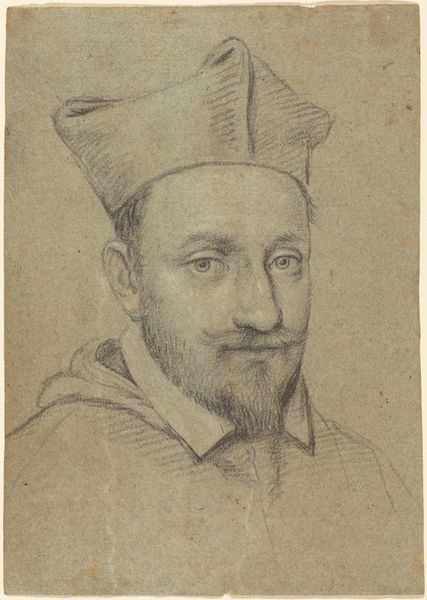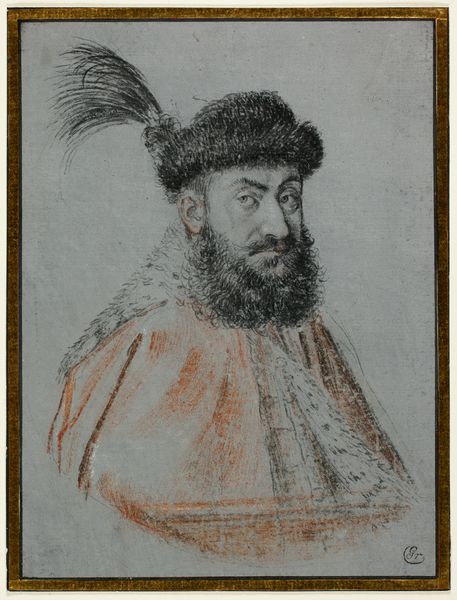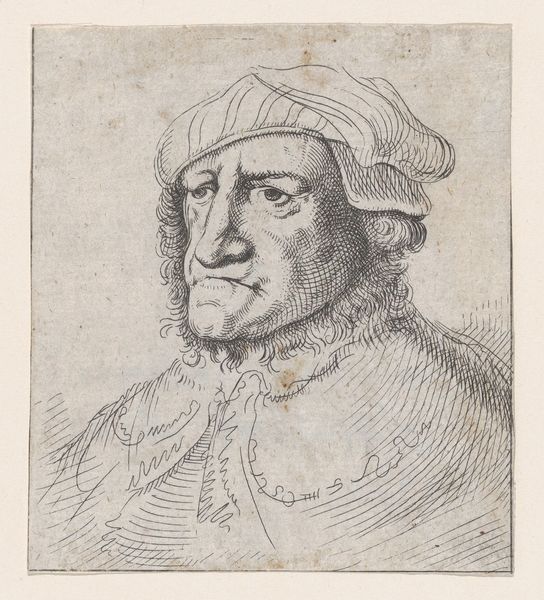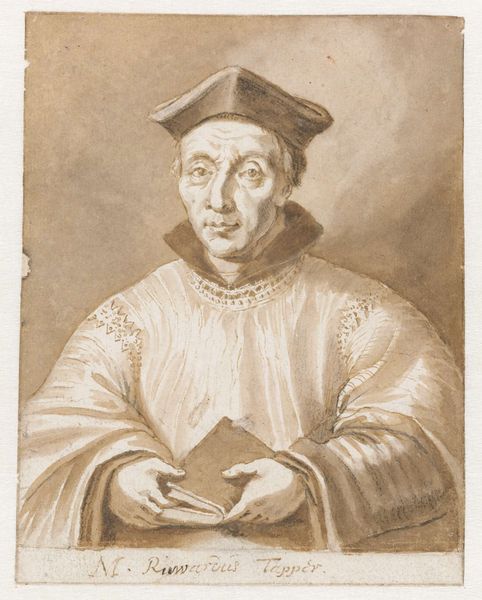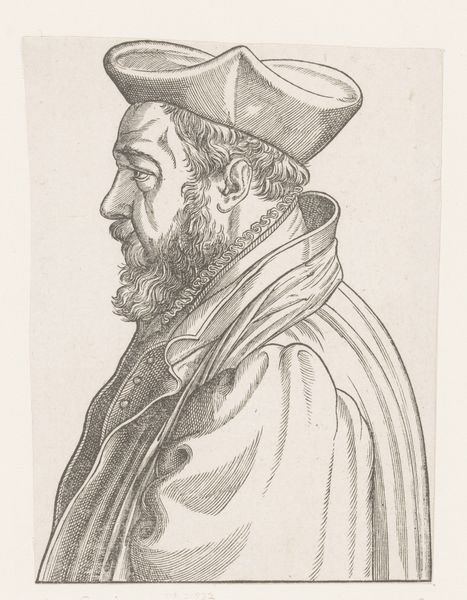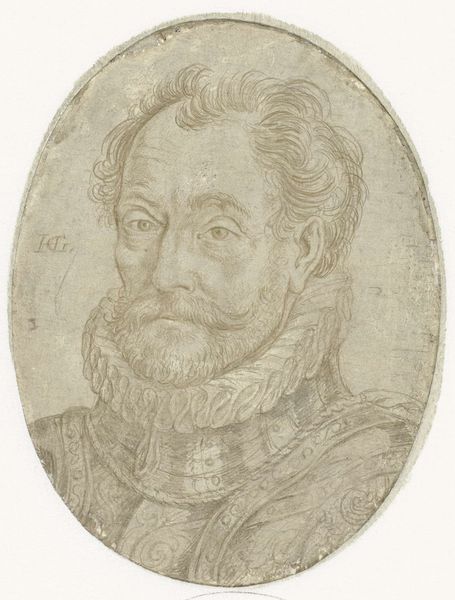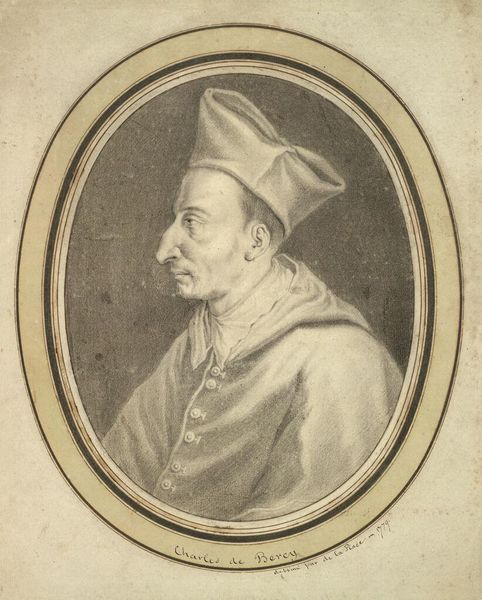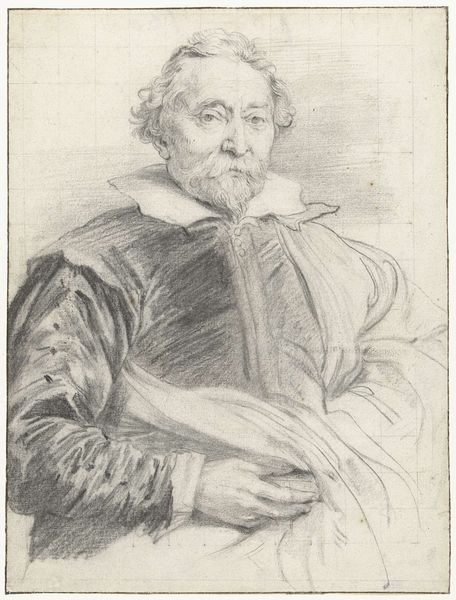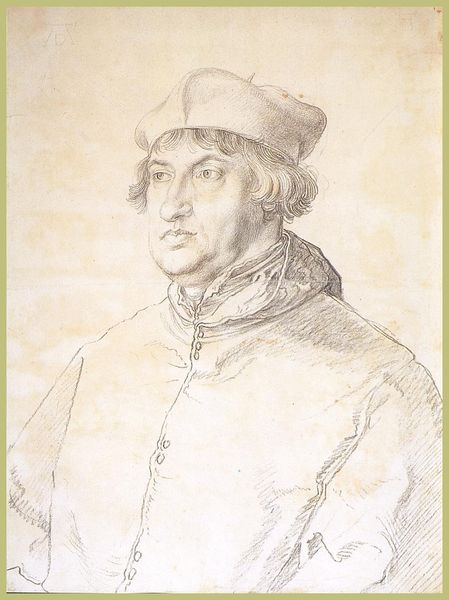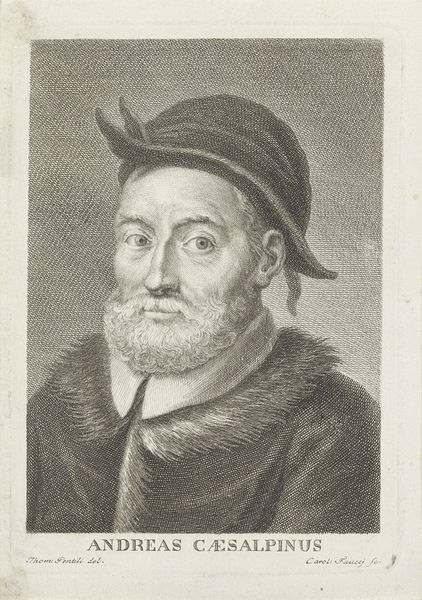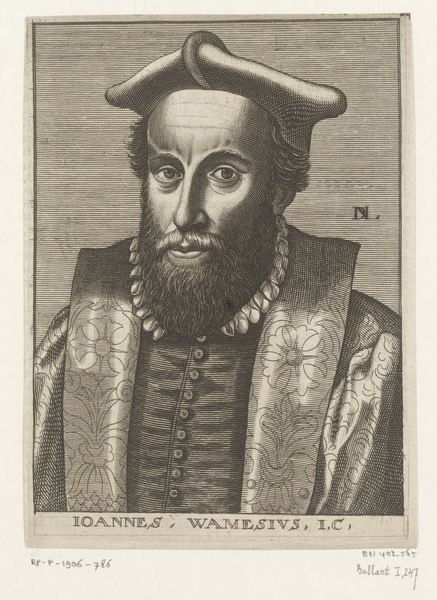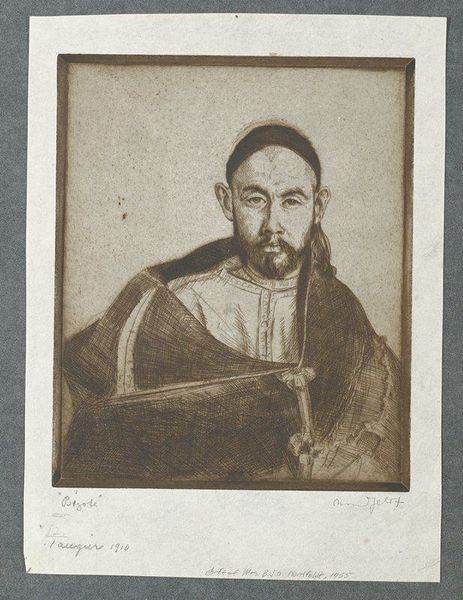
drawing, dry-media, pencil, charcoal
#
portrait
#
drawing
#
self-portrait
#
charcoal drawing
#
dry-media
#
pencil drawing
#
pencil
#
portrait drawing
#
charcoal
#
northern-renaissance
#
realism
Dimensions: height 336 mm, width 270 mm
Copyright: Rijks Museum: Open Domain
Editor: This is a portrait from around 1505 to 1507 by Hans Burgkmair, rendered in charcoal and pencil. The man's gaze is so direct and even, I'm wondering, what stories do you think are embedded in the visual elements of this drawing? Curator: Consider his gold cap. Gold, throughout history, symbolizes wealth and status, but also wisdom and spiritual enlightenment. Given that the sitter seems of noble bearing, might the cap represent worldly power? Or is it a symbol hinting at inner worth, his pursuit of knowledge? Editor: It's fascinating how a seemingly simple hat can carry so much meaning. And what about his robe-like garment? Does the way he's cloaked have symbolic meaning, too? Curator: Certainly. The draping of fabric in portraits, especially during the Renaissance, can suggest modesty, authority, or even vulnerability. It adds layers to the portrayal. Editor: So, every detail, even something as common as clothing, has symbolic potential? Curator: Precisely. And the artist carefully chooses these details, understanding that they will contribute to the viewer’s understanding. It makes me wonder, do you feel that this portrait tells us more about the man or about the social values of the time? Editor: That’s a really great question... maybe it's both, inextricably linked. Thinking about how people interpret images – both then and now - gives me so much to consider! Curator: Indeed. It shows us that we're not just seeing a face, but engaging with a carefully constructed representation.
Comments
No comments
Be the first to comment and join the conversation on the ultimate creative platform.
